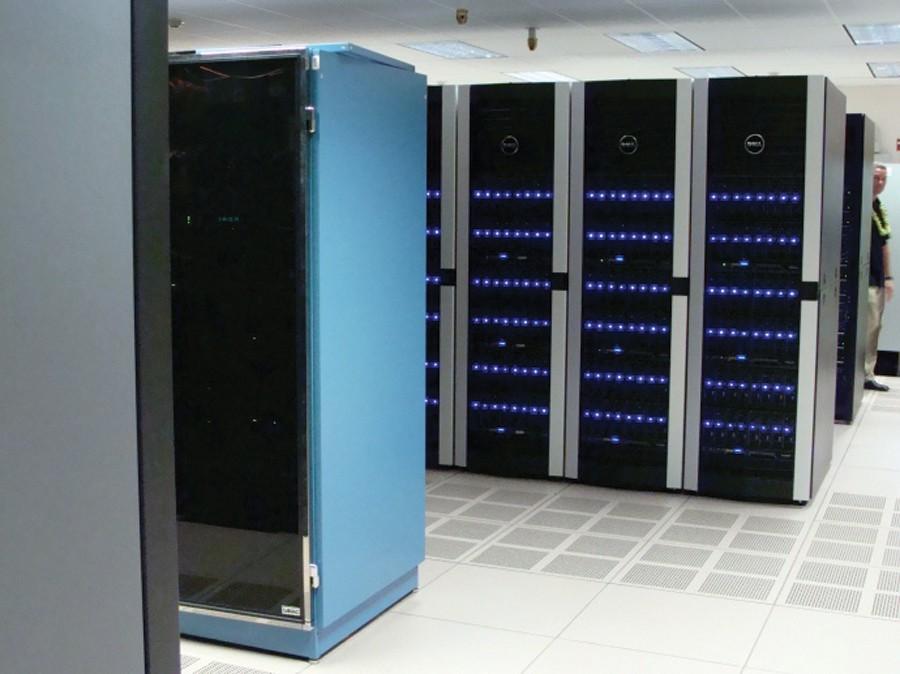
The ManeFrame, SMU’s new supercomputer, was unveiled Wednesday at 4 p.m. at the data center on the southeastern end of the campus.
Theoretical performance of MANA combined with SMU’s current system would exceed 120 teraflops. Flops is a measure of computer performance and an average consumer computer ranges from .25 to 7.5
“High-performance computing has become an indispensible tool in the 21st century,” said James Quick, SMU associate vice president of research and dean of graduate studies in a
press release. “The incredible computational power provided by high-performance computing is widely used in science, engineering, business and the arts. ManeFrame brings this capability to Dallas.”
At its peak, ManeFrame is expected to be capable of more than 120 trillion mathematical operations a second.
Faculty and students research into subjects ranging from particle physics to human behavior to water quality and drug discovery would be increased. The new tool, installed in December, will be opened for campus in May.
High-performance computing makes it possible for researchers to study complex problems with massive amounts of data using sophisticated software and step-by-step recipes for calculations.
“Certainly having a large resource like that increases the visibility of the SMU scientific community,” Assistant Mathematics Professor Andrea Barreiro said.
The previous supercomputer would suffice for Barreiro computations. For Barreiro, who works in mathematical modeling, analysis and simulation of neural network, the new supercomputer would reduce her three month computation time to about two and a half months.
“There are other faculty whose computation is very intense, they would be benefitted significantly,” she said.
ManeFrame was previously located at the Maui High Performance Computing Center, one of the five U.S. Department of Defense Supercomputing Resource Centers, according to Director of SMU’s Center for Scientific Computing Thomas Hagstrom.
The supercomputer was named “ManeFrame” in March, after sophomore Chase Leinberger won the contest sponsored by Provost and Vice President Paul W. Ludden.
“It was pretty satisfying,” Leinberger said.
Leinberger, a business management major, came up with the name after going through several names and then deciding he wanted to combine both computers and SMU into something witty. He didn’t know he was going to win until the unveiling of the supercomputer.
“It was actually on my birthday,” he said. “ It was like a present from SMU.”
The winner was decided by email vote by SMU faculty, staff and students.
The top five entries, selected by panel James Quick, associate vice president for research and dean of graduate studies; Patty Alvey, director of assessment and accreditation, Rick Briesch, in the department of marketing; Thomas Hagstrom, professor of Mathematics, Jingbo Ye, professor of physics, Ramon Trespalacios, student body president and Katherine Ladner, student body secretary, won an iPad mini.








